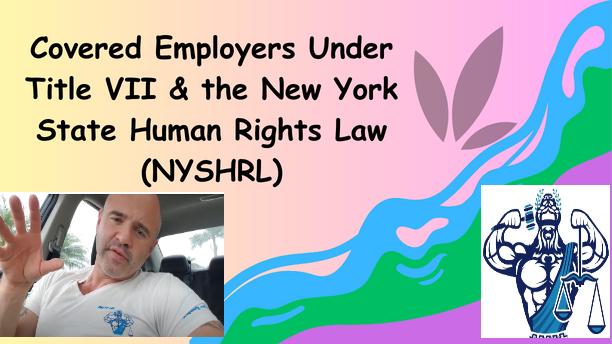In the past, I have argued that Companies like Google should be required to maintain and uphold first amendment rights under the Lugar Test. If you recall, the Lugar Test tells us if (1) the deprivation on someone is caused by the exercise of some right or privilege created by the State or by some rule of conduct imposed by the state or by a person for whom the State is responsible (i.e. a demand of the state on the private actor), and (2) the party charged with the deprivation is a person who may fairly be said to be a state actor,” either as a state official, or as someone whose “conduct is otherwise chargeable to the State,” then constitutional protections are implicated on that party. Companies like Google get so much business from the Federal Government, serving and performing functions that arguably, the government should be doing, that is hard to argue that they should not be required to maintain Constitutional Protections such as would be required against the Government.
We have also stated in the past that Companies like Facebook, Twitter and Instagram, while they do not have the same government involvement as Google does, they serve a very modern and public function. As it concerns the “public platforms” of Facebook, Twitter and Instagram, thought they are private corporations, it is undisputable that they serve as the modern public forum.
To restate the argument.
A “Public Forum” as traditionally defined, is defined as a place or medium customarily employed for public speech. A traditional public forum exists wherever people traditionally or commonly engage in public speech. When the term public forum is used without any other qualification, it likely means a traditional public forum. A speaker’s corner in a public park, certain pavilions in a city, and a bulletin board for public use may all be established by custom as a public forum. Access to a traditional forum cannot be denied because of the subject matter of the speech, although it may be limited by reasonable regulations of time, place, and matter. See Bouvier Law Dictionary – Public Forum (Traditional Public Forum)
As society developed, and the government became more involved in public affairs, this definition expanded overtime. In addition to traditional public fora, a public forum may be created by government designation of a place or channel of communication for use by the public at large for assembly and speech, for use by certain speakers, or for the discussion of certain subjects. This designation may be permanent or temporary. See Cornelius v. NAACP Legal Def. & Educ. Fund, 473 U.S. 788.
However, in recent years, the government has been expanding the definition of a public forum. Using the traditional definition of a public forum, a public forum is defined as a place that is open to the public where information is freely exchanged.
The Courts have held that under that definition, a public forum is not limited to a physical setting, but also includes other forms of public communication. Thus, for example, the concept has been applied to electronic media, such as internet websites. It has also been applied to newsletters with wide circulation. See Vargas v. City of Salinas, 135 Cal. App. 4th 361.
The idea is that once a public forum is opened, equal access must be provided to all competing factions.
For purposes of free speech analysis, there are three categories of forum: the traditional public forum, the limited or designated public forum, and the nonpublic forum. If either of the first two categories is at issue, the court decides whether the challenged law restricts the content of speech in that forum or only its time, place, or manner.
Electronic communication media may constitute public forums
Web sites that are accessible free of charge to any member of the public where members of the public may read the views and information posted, and post their own opinions, meet the definition of a public forum for statutory purposes. A newspaper, newsletter, or similar publication may constitute a public forum, particularly where it reaches a large group of people. On the other hand, such a publication will not always fall within the public forum definition, as when access to its content is controlled by the publisher. See Vargas
Now, my lawyer friends will certainly push back and say, “well that is the law in California, not the United States overall, and it is a state by state matter.”
Well on April 5, 2021, the United Sates Supreme Court just recently comment on this in Biden v. Knight First Amendment Inst. at Columbia Univ., 141 S. Ct. 1220. While it wasn’t the holding, which simply remanded the underlying case back to the Court of Appeals, it is the Concurrence written by Justice Thomas, that is sexy here.
While I would love for you all to read the text, I’ll sum it up here in bullet points:
There is substantial case law where the legal system has subjected certain businesses to free speech regulations, to require them to serve all comers. Justice Thomas points to the likes of Common Carriage, Network Neutrality and Sec. 230 are all regulations that support these requirements of service.
Governments have limited a company’s right to exclude when that company is a public accommodation.
Internet platforms of course have their own First Amendment interests, but regulations that might affect speech are valid if they would have been permissible at the time of the founding. See United States v. Stevens, 559 U. S. 460 (2010)
Based on how the government regulates common carriers, Legislatures might still be able to treat digital platforms like places of public accommodation. Although definitions between jurisdictions vary, a company ordinarily is a place of public accommodation if it provides “lodging, food, entertainment, or other services to the public . . . in general.” Black’s Law Dictionary 20 (11th ed. 2019) (defining “public accommodation”); accord, 42 U. S. C. §2000a(b)(3) (covering places of “entertainment”). Twitter and other digital platforms bear resemblance to that definition. This, too, may explain the Second Circuit’s intuition.
Justice Thomas indicated that Circuit Courts are split on the question of government regulation on anything other than “physical” locations. But understand, one of the functions of the Supreme Court is to harmonize federal law between the Circuits.
So, what does all of this mean?
From my perspective, it is almost undeniable to say that a platform like Facebook serves as a legitimate public forum. Using the same line of reasoning that Justice Thomas used, if the internet were in existence back then, it would most certainly be included in the application of free speech. The Founders denounced any abrogation of free speech and free press. Madison argued that restraints on speech were inapplicable to a republic like the United States, which was founded on the principle that “the people, not the government, possess the absolute sovereignty.”
It was a basic concept that in order to hold public officers responsible in a republic, people must be able freely to discuss public officials and their policies. If office holders have violated the people’s trust, they should not be able to shield themselves from criticism by restricting the press. Back then, there was no internet, and the only method of publishing and distributing information was the press.
I’m willing to bet that if the question ever came up to the Supreme Court of whether or not Facebook, Instagram or Twitter are modern political forums, and subject to Constitutional scrutiny, the Supreme Court would adopt Justice Thomas’ concurrence and rule in favor of imposing Constitutional Restrictions on their ability to silence individuals.
If I were advising companies like Facebook (which includes Instagram) and Twitter on their platform regulations and standards, I would suggest that it would be best to begin loosening up their cancel culture practices and their silencing of opinions they disagree with, and begin to self-regulate, before the Supreme Court renders that heavy gavel.
Yours in law, love and lifts,
 314-648-2586
314-648-2586 CALL US NOW
CALL US NOW








